Georgia Gardener Newsletter Design Tip: January 11, 2007
Container Gardening
Creeping Verbena (purple), Dahlias (red), Lantana (yellow) and Purple Fountain Grass.
Anyone can garden in containers. This is one type of gardening that really creates a level playing field.
You don't have to live in a house or even on the ground floor of an apartment or condo. If you have a
balcony, patio or even a spot in your living room, you can have a container garden. Container gardens can
be made for sun or shade and contain trees, shrubs, perennials, annuals and even edibles such as
fruits, vegetables and herbs. In fact, some plants perform better when grown in containers.
Remember that container plants will experience a wider fluctuation
in temperatures. Their roots and foliage will be exposed to air temperatures more
quickly and they won't have the benefit of slowly changing or insulating soil temperatures.
If you plan on making your container plants permanent, choose plants
that can handle at least one zone colder and warmer than where you live. For metro Atlanta, that would
be plants for at least zones 6-9.
Container gardens are also great ways to grow plants that aren't hardy.
One such example would be citrus trees, which are placed outside for the spring through fall and then
sheltered indoors or in a greenhouse for the winter. And while we're on the subject of mobility, changing
sun angles through the seasons force some gardeners to choose containers for their vegetables and herbs.
Finally, since most of us are blessed with compacted clay soil in our gardens, I like to use containers for those
plants that are persnickety about their drainage, Daphne being at the top of that list.
Start by assessing your sun exposure. Containers that are grown in the sun can heat up quickly in the
summer and that can cook sensitive roots. These containers often have to be watered daily, so don't use
plants that are quick to wilt. Often you can "buffer" the intense heat by placing the planted container
inside a second container with some insulating material (styrofoam peanuts, newspaper, mulch,etc.) in between
that is concealed with a decorative top layer.
Containers grown in the shade won't have the severity of rapidly fluctuating temperatures and don't
usually require daily watering unless the plants being grown are known to have high water requirements
such as bog plants.
Choose any type of decorative container that you desire, but keep in mind that terra cotta and concrete are
heavy (even heavier once filled) and that they can crack in cold weather. I'm not fond of plastic
as it looks, well, cheap to me. I particularly like containers made of either resin (durable and light),
ceramic or metal. The containers you use can even be unusual items that weren't originally for plants.
Be creative.
Tip: If you have a large container that is top-heavy and prone to tipping over in wind,
try putting a brick or two in the bottom before adding the potting mix.
Potting Mix and Mulch
It's important to select a mix for your container that's going to meet the needs of your plants. If
the plants require sharp drainage, you may want to consider mixing in coarse sand or gravel. I find
that any of the commercial potting mixes available, especially those already containing slow-release fertilizers
work great. Components such as peat moss should be avoided because they are acidic and once wet, hold
water like sponge. I also recommend not using soil from the garden as it may contain diseases or pests.
Don't use rocks or gravel at the bottom of containers, they really don't work to keep the roots dry.
Tip: If you have a large container that doesn't need to be completely filled, fill the bottom with bulky
yet light materials such as styrofoam peanuts or plastic grocery bags.
When either in the sun or shade, containers that are not tightly packed with plant material should
have some type of mulch at the top to help retain moisture and moderate temperatures.
Watering
For most plants, water the containers when the top inch or so is dry. All containers (except those with
certain bog plants) should have one or more drain holes. If a catch pan is used, keep it dry or water may
wick back up into the container or provide a breeding ground for mosquitoes.
Tip: To keep potting mix from washing out the drainage holes, cover them with used dryer sheets.
Fertilizing and Using Old Potting Mix
If the potting mix used contains slow-release fertilizer, read the bag for the expected duration of the
fertilizer. Once exhausted, you will want to fertilize during the growing season. Annuals and
long-blooming perennials should be fertilized every 3-4 weeks. Trees and shrubs only twice
from spring until fall. For annuals, replace the potting mix every time you switch out the plants.
Fresh mix will promote good growth and flowering. For more permanent plantings, you can amend the
mix every year by removing the top inch or so of soil and replacing it with fresh mix and mulch.
Replace the potting mix any time a permanent plant is repotted. Old potting mix is great as a soil
amendment for the garden or an addition to the compost pile.
Plants for Containers
For the most part, put any plant you like in a container. Containers can contain a single specimen plant
such as the Japanese Maple and Hinoki Falsecypress pictured below or a combination of plants that
have similar requirements. It's entirely up to you.
When mixing plants, try to have a central plant that is taller surrounded by lower plants and if room,
a draping plant to hang over the sides, such as the containers pictured below growing from a balcony in
New Orleans.
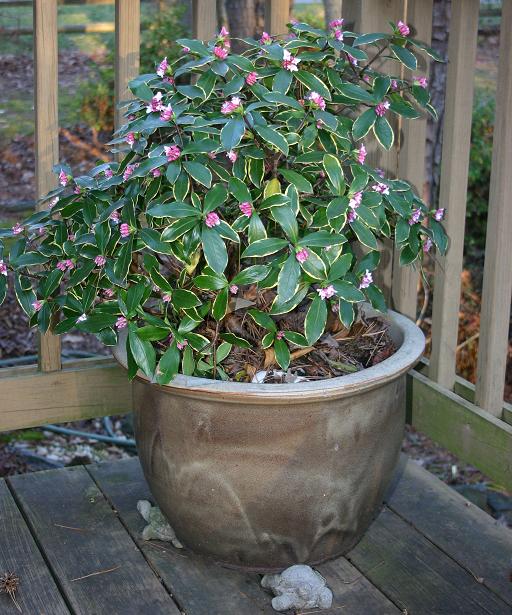
|
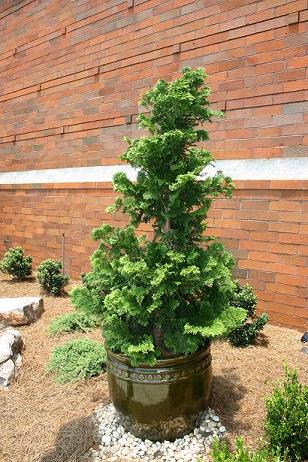
|
| Daphne odora | Hinoki Falsecypress
|
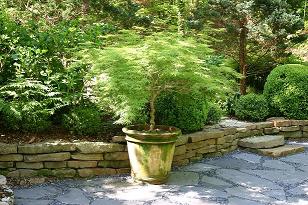
|
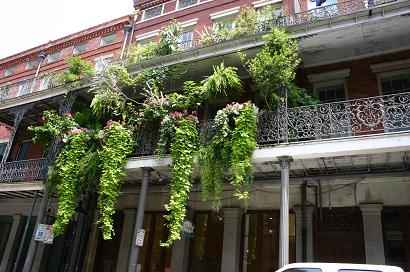
|
| Japanese Maple | Balcony Container Garden |
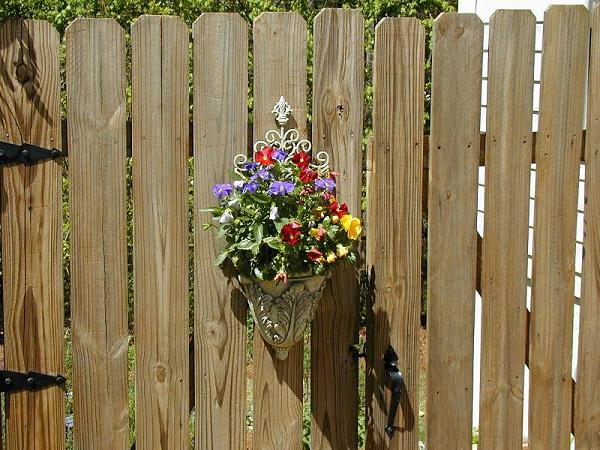
|
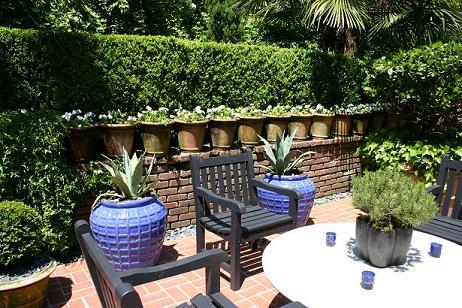
|
| Pansies on a fence | Tender Agave on a patio |
Copyright © 2007 by Theresa Schrum - All rights reserved
No part of this website may be reproduced without the expressed written permission of Theresa Schrum







